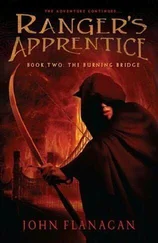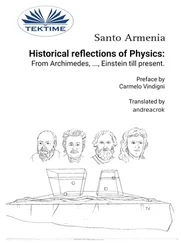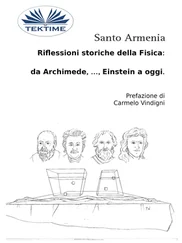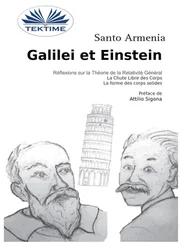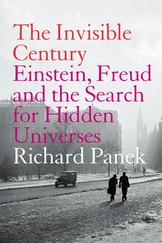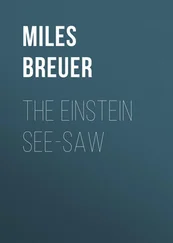Roger smiled. “It’s very likely that the 12 and 144 carry the implication of a base-12 number system. But… what the hell could this Snark thing be?”
George turned to Alice. “You discovered the flashes, and you’ve had as much time to think about this as I have. What’s your guess as to what the Snark is?”
Alice was caught by surprise by the question. “Calling on the students, Professor George? I detect your academic tendencies surfacing,” she said. She opened her notebook and flipped pages. “But, okay, if you want class participation, here’s my list of what we know about the Snark. It came out of an energetic particle collision. It seemed to bring along its own energy. Its ionization track shows that it has a big electric charge, and its lack of magnetic deflection indicates that it’s very heavy. It spits quarks as it goes along, which has something to do with color. At rest it emits blue light at a single frequency. It flashes and it sends a series of prime numbers and a lot of additional code. Did I miss anything?”
“You’re doing fine,” said George. “I might add that the Snark is much more massive than any known particle, but nevertheless it seems to be stable. Continue.”
“From the flashes I must assume we’re dealing with a signal,” said Alice. “I once did a story on SETI. The claim of the experts I interviewed was that the sequence of primes indicates a message generated by intelligence rather than some product of a natural phenomenon. Okay?”
George shrugged. “We’ll accept that as at least a working hypothesis,” he said. “Keep going.”
“Okay,” said Alice. “The first possibility, it seems to me, is that the Snark might be a tiny mechanism for playing back a prerecorded message.”
“Wait a moment,” said Roger. “Do we know how large this thing is?”
“Small,” George said. “We tried looking at it this morning with a good optical system, but all that could be seen was a diffraction-limited blue spot. It’s certainly smaller than the dust grains the system was resolving.”
“We know it induced those quark jets,” said Roger. “That suggests to me that its size is probably subnuclear. So it can’t be a playback device,” he concluded.
Alice frowned. “How do you know that, Roger?” she asked.
“Any message must be stored in the form of structure,” he said. “And a structure must be an arrangement of components. What, then, are the components? Atoms? Much too big. Nuclei? Neutrons and protons? Or perhaps quarks or leptons? What forces could possibly fix them in such a structured arrangement? Or read them out and produce a playback? There are no forces that could do that. Conclusion: There is no such structure.”
“For an open-minded theorist, 1 fear you may be verging on the dogmatic, Roger,” said George. “We’re dealing with a new phenomenon here, and we can’t absolutely rule out previously unknown forces. But I agree with the sense of your conclusion. It seems unlikely that the Snark could be a self-contained playback device.”
“And I suppose,” said Alice, “that the same argument also applies to my second alternative, which is that the Snark is a self-contained intelligence that’s trying to communicate with us.” “Indeed,” Roger said. “That would require even more structure.”
“Any other possibilities on your list?” George asked.
“Just one,” said Alice. “The Snark might be a link to an intelligence located elsewhere. It might be the equivalent of a tiny radio receiver.”
“That requires structure, too,” said George, “but not as much. An optical fiber is considerably less complicated than a compact disc player. Or the musicians who made the music recorded on the CD.”
“But,” said Roger, “isn’t your Snark a bit, uh, short for an optical fiber link?”
George spread his hands. “Who can say? At any rate, I agree that a communications link hypothesis is more probable than your other alternatives, Alice. But is it for one-way communication or for two-way communication?”
Roger scowled. “Surely,” he said, “two-way communication is not a serious possibility. If the Snark was a link to an extraterrestrial intelligence, which I, for one, am not yet willing to concede, such an intelligence would have to be very far away. Hundreds of light-years, perhaps thousands or millions. Even if you did send a message that they were able to receive, you, and perhaps our whole civilization, would have died before the reply message came back. Remember your relativity, people. You can’t beat the speed of light!”
George looked directly at the theorist and grinned. “Roger, that’s all very logical, but I have a hunch you’re wrong. We have, as they say, a significant difference of opinion. So I’m willing to wager, say, five hundred dollars that two-way communication is possible using the Snark. You may accept my wager at whatever odds you consider to be fair and equitable. Interested?”
Roger looked flustered. “Uh, five hundred dollars? Let me, uh, think about that for a while, George,” he said. “Your intuitions have a certain reputation around here.”
“Two-way communication?” said Alice softly. “I hadn’t thought of that. How would you do it?”
“Well,” said George, “our Snark, by dumb luck, is already mounted in an almost ideal system. That lead-glass crystal is optically coupled to a photomultiplier light detector for receiving signals, and it has an onboard light-emitting diode system that makes light flashes in the scintillator for testing. We can use the LED system to transmit light pulses back to the Snark.”
“If you were going to send the Snark a message, Roger, what would you send?” Alice asked.
“Hmmm,” said Roger. “The conventional wisdom is that you should send back the same message you received. In this case, though, that might not be such a good idea. It could be interpreted as just a reflection. I’d say, send back a string of primes, perhaps at a different transmission rate, and don’t stop at prime number 144.
“But I think we must wait a bit before trying to communicate back. There are profound implications of that which need to be considered. I think there are even protocols established by the United Nations for communicating with alien species that should be observed.”
George turned to the theorist with a look of mock disappointment. “Do I take it then, Roger, old sport, that you don’t want to bet against me?”
GEORGE YAWNED AND LOOKED AT HIS WRISTWATCH. IT said JUNE 14, 2004, 06:55 A.M. After the excitement of the weekend, he was glad that he had remembered the appointment to use the microprobe.
The SSC’s superconducting metallurgy research laboratory was on the west campus, just across from the administration building. Wolfgang had arrived early and was already securing his prepared sample of two chips on the polished metal surface of the scanning microprobe stage when George arrived. They had received a brief lesson in how to use the device the previous Friday, and Wolfgang now had the system almost ready to go.
“Which chips are we testing first?” George asked. He considered the importance of this measurement. It could provide the key to their radiation damage problems, or it could be another blind alley. In either case, at 10 a.m. he would have to make a report on their progress. He hoped there would be something to report.
“One is from the new batch that just arrived from the chip foundry,” said Wolfgang, “and the other is one of our problem children. I thought we might learn something from a comparison.” George placed a loop of soft ductile indium wire on the lower vacuum flange and Wolfgang lowered the counter-weighted upper part of the apparatus down to meet it. Together they began to clamp down on the flanges, compressing the indium to form a metal-to-metal vacuum seal.
Читать дальше



